Personal Finance
How Much You Can Save If You Commute By Bike
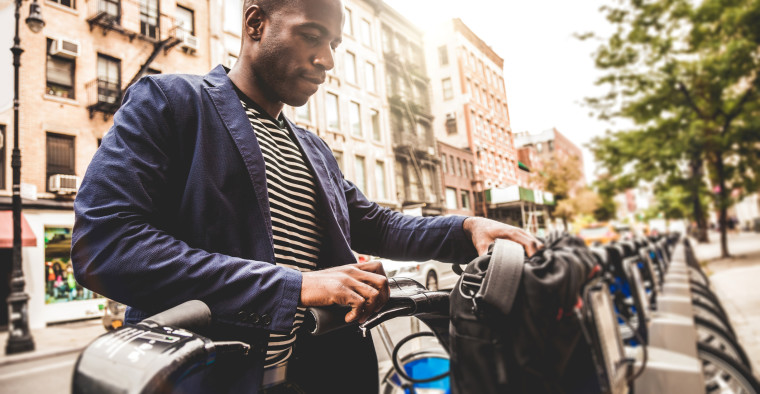
Less widely recognized is how much commuters can save by getting to and from work by bike. Still growing rapidly, bikeshare programs greatly facilitate bike-commuting by making bikes available at various stations where people can either rent or return one of the program’s bikes, which are of the easy-to-ride "cruiser" design. Annual bikeshare subscriptions (which typically offer unlimited 30- or 45-minute rides) cost about the same as a monthly transit pass, which makes these programs a highly economical way to get around.
A ValuePenguin analysis did the math in nearly 20 cities and found cost differences to be dramatic. We also calculated travel times for typical bike commutes in five major cities, comparing those to the same times on public transit, the leading commuting alternative in many of the cities we studied. Our results explode the myth that traveling to work by bike is slower than other alternatives.
Bicycling to work isn’t practical for many commuters, of course. More than 2 of every 3 Americans travel six or more miles to their workplace — a distance that would require more time and effort than most workers can spare. And even a shorter journey may not work if the route is unfriendly to biking or to parking a bike, or both.
How much you save commuting, and how long it takes
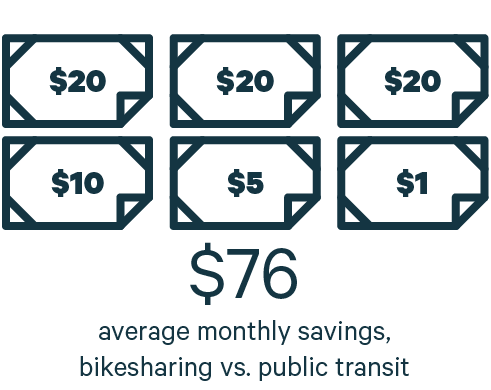
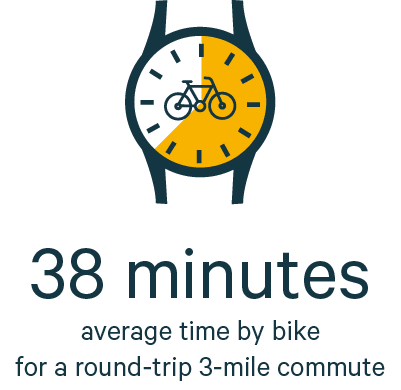
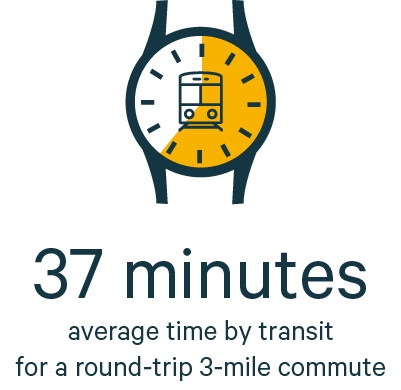
What if your commute is notably longer or shorter than the three-mile journeys we primarily used for our comparisons? As distances grow beyond three miles or so, our research finds, the time advantage for taking transit tends to grow. However, for sub-three-mile commutes, we predict a higher chance of biking being faster. That's largely due to the downtime required to wait for a bus or train; taking out or returning a shared bike, by contrast, typically takes no more than a minute or two.
The consistency and predictability of bike commuting is one of its key advantages. Many cities are building out networks of bike lanes and dedicated paths that make pedaling faster and safer, and transit systems in New York and elsewhere are suffering growing delays and interruptions due to maintenance issues and a crumbling infrastructure.
We’ve resisted calculating annual savings for commuting by bike, in either time or money. That figure necessarily depends a lot on your tolerance for riding through intemperate weather in the height of summer or depths of winter, especially in the cities we selected.
However, you could easily save some $500 a year by bike commuting on only 50% of your trips to and from work rather than commuting by train or bus. We didn’t calculate costs to commute by private car, taxi or ride-hailing service, mostly because it isn’t an option most people would use for a three-mile commute in the major cities we studied most closely. But it’s safe to say the cost of car commuting exceeds that of either transit or biking, especially if the fixed costs of owning and insuring a vehicle are included in the calculations.
Read more: How Much Does Electric Car Insurance Cost?
Top cities for bike commuting
These five locations stood out for riding to work, even among the longer list of cities we include below. Each has at least 100 stations at which commuters can check out or check in shared bikes. And where in some cities, stations are located mostly to benefit particular types of users — tourists, say, or college students — these top five cities had stations located both in key areas where people work and live.

New York City
No city on our list is more advantageous for bike commuting than New York. Users of its Citi Bike program save the most money of those in any city (more than $100 a month compared with buying an unlimited transit pass). They also enjoy one of the biggest gains in time compared with taking the subway — nearly three hours a month for three-mile commutes, in our estimates. That time advantage is likely to persist given the city’s extensive subway system repairs that are expected to negatively affect travel times for months or even years.
As another plus for bikers, New York boasts both the largest (at 600 and growing) and most dispersed (in all five city boroughs) array of bike stations. There’s also an extensive network of both bike paths (along the city’s rivers, for example) and bike lanes along streets and avenues — and many of the latter are largely isolated from vehicle traffic.
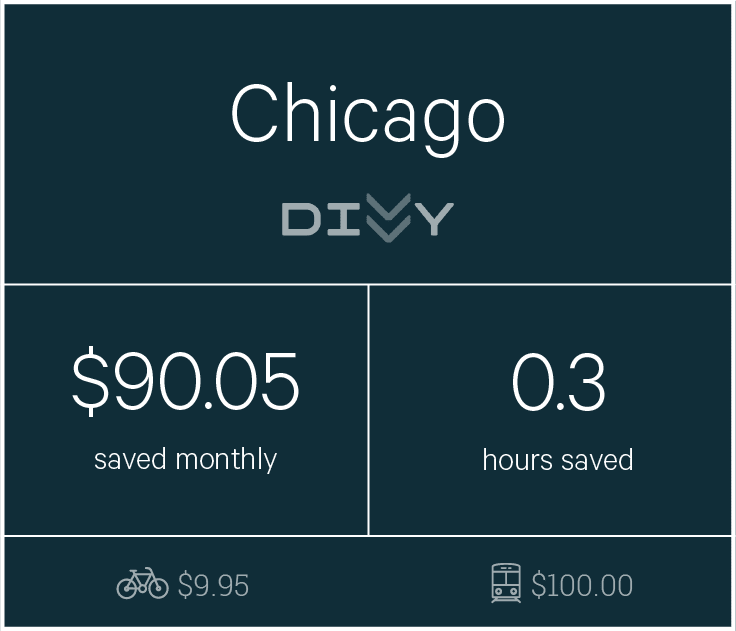
Chicago
Costs for the bikeshare program (known as Divvy) and a transit-system pass in Chicago were both very close to national averages, at around $10 and $100 a month, respectively. And travel times for transit and bike for our three test routes were unusually close, clocking in at 35 and 36 minutes a day for bike and transit, respectively.
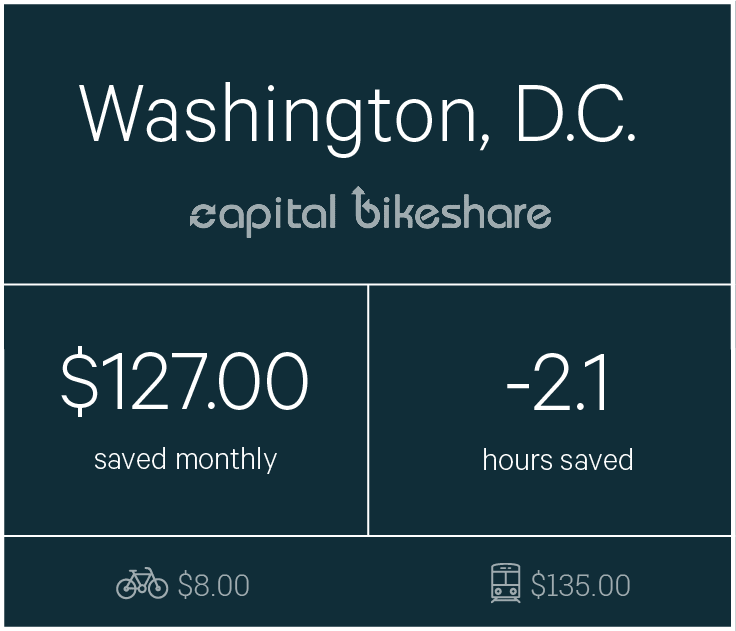
Washington, D.C.
The priciest monthly transit pass and the least expensive bikeshare program, known as Capital Bike Share, result in the biggest payday of all for bike commuters in D.C. — at more than $125 a month. If only the timing was as much in favor of the bikers. Instead, D.C. delivered the slowest bike commutes of any of our cities, perhaps because the city’s unique layout thwarts direct rides to work.
With times for transit that were right on the average, that resulted in the city’s bike commuters spending an estimated six minutes longer in the saddle to get to work and back than they would by riding the subway on both trips.
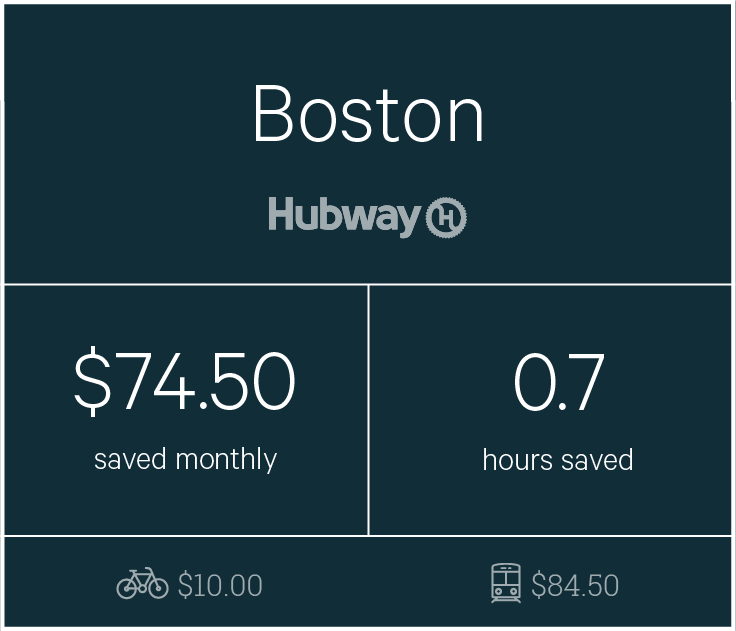
Boston
In Boston, the $10-a-month cost of its Hubway bikeshare program comes in at about the national norm, as did its three-mile travel times for both biking and transit in our research. A key reason that Beantown bikers do not save more compared to taking public transit is the relatively low $84.50-a-month cost of the city's 30-day Monthly Link Transit pass. Offering unlimited access to both subways and local buses, the pass was sufficient to cover the relatively short subway rides in our study.
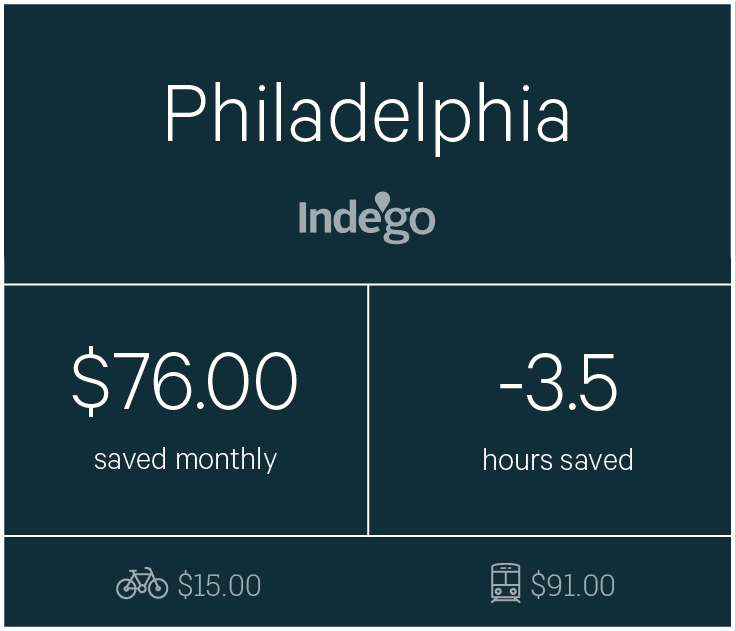
Philadelphia
This was the city in which the gap in travel times for three-mile commutes by bike were the widest between bike and transit, with biking about 40% (or 10 minutes per day) slower in our estimates. That gap is partly because biking took longer than the norm — 41 minutes a day, compared with an average of 33 minutes for the five cities as a whole. A bigger factor, however, may be the efficiency of the city’s SEPTA transit system, which delivered an overall average travel time of 31 minutes a day, compared with 45 minutes overall for all five cities.
How much you can save by biking, city by city
Here’s how much money you could save in the 20 U.S. cities with the most extensive bikeshare programs, listed from most to least savings compared with riding public transit. We narrowed the list to cities with at least 50 stations at which you could rent or return bikes, and we detailed the number of bike stations in every city based on 2016 data. A number of systems are now expanding or plan to do so in the coming years, so these figures may evolve upward.
The bikeshare costs are based on the monthly fee as billed if you make an annual commitment to the program (as you typically must and is the most economical option). Similarly, we selected the optimal 30-day transit pass that would allow riders to complete the three-mile commuters we analyzed at the lowest cost.
City | Program | No. of Bike Stations | Monthly Bikeshare Cost | Monthly Transit Cost | Savings For Bikeshare |
|---|---|---|---|---|---|
| Washington D.C. | Capital Bike Share | 437 | $8 | $135 | $127 |
| Los Angeles | Metro Bike Share | 66 | $20 | $132 | $112 |
| New York City | Citibike | 645 | $15 | $121 | $106 |
| Miami | Citibike | 147 | $15 | $113 | $98 |
| Chicago | Divvy | 581 | $10 | $100 | $90 |
Methodology
We compared bikeshare programs to public transit options, since we judged that in the cities we selected transit was the leading alternative to riding a bike for journeys that represent a suitable length for commuting on two wheels. Here’s how we selected the cities and gathered both the relevant costs and travel times for them.
Selection of cities: For its city selection and calculations, our study took advantage of the comprehensive bikeshare programs now found in more than 70 cities across the U.S. Of the more than 100 bikeshare programs, we first narrowed our choice to the 20 programs that have at least 50 stations; data on these programs is based on 2016 data gathered by Greater Greater Washington.
We then selected five cities in which both public transit and bikeshare programs offered good coverage within residential areas that were within three miles of key work neighborhoods, such as those with a high number of office buildings.
Travel times: We selected journeys within the cities that traveled from areas with a heavy residential population to an area with a large amount of people working. We selected three-mile routes since we judged that to be a short-enough distance for people to be able to have both biking and public transportation be a viable option. We also looked at data for five-mile bike routes, but ultimately focused our research on three-mile routes.
In order to figure out the time savings for people who live near bikeshare stations, we planned out three three-mile routes via Google Maps, measured by setting the app to 8:00 a.m. for an outbound journey and 5:30 p.m. for the return one. All stations were located adjacent to or very near a method of public transportation; where there was a choice of mode, we selected the fastest option. We then averaged the times.
In order to calculate the monthly hours spent commuting, we multiplied the average minutes per day by the average work days in the month (21). We then converted the total minutes into hours.
Cost savings: Costs for the bikeshare programs were obtained from their websites. The costs we show reflect the monthly billing for the plans, which all require an annual commitment. (Daily or hourly options are available but would be far more expensive for regular commuters.) Costs for the transit systems are based on the least expensive payment method required for the journeys we mapped out, which is typically a 30-day unlimited pass.
